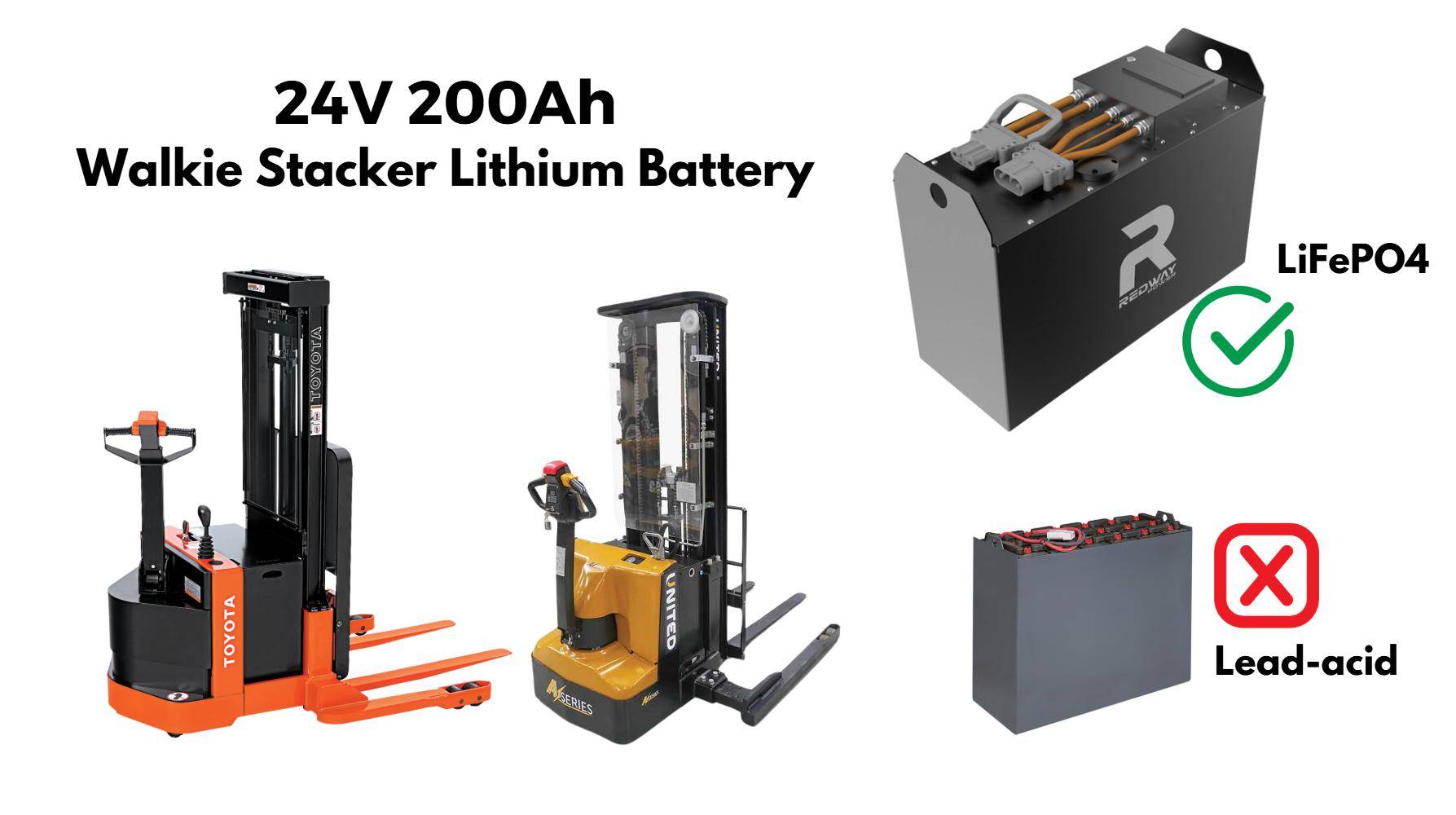
Blog
What Is a Walkie Stacker and How Does It Improve Warehouse Efficiency?

What Are the Key Components of a Walkie Stacker?
A walkie stacker is a pedestrian-operated forklift designed for lifting, moving, and stacking pallets in tight warehouse spaces. Combining manual control with electric or hydraulic power, it operates in aisles as narrow as 6 feet, making it ideal for loading docks, retail storerooms, and manufacturing facilities. Its compact design maximizes vertical storage while minimizing floor space usage.
48v Lithium Forklift Batteries
What Are the Key Components of a Walkie Stacker?
Critical components include:
48v Lithium Forklift Batteries
1. Mast: Telescoping structure for vertical lifting (single, double, or triple-stage).
2. Forks: Adjustable widths to accommodate various pallet sizes.
3. Power System: Lithium-ion or lead-acid batteries providing 6-8 hours of runtime.
4. Control Handle: Multi-function panel with lift/lower buttons and horn.
5. Safety Features: Overload sensors, emergency stop, and blue safety lights.
The mast’s construction directly impacts lifting capacity and stability. Triple-stage masts allow maximum height reach while maintaining a compact footprint when retracted. Fork adjustability is crucial for handling diverse pallet types – standard 48″x40″ pallets require at least 42″ fork spread, while Euro-pallets need 31.5″ minimum. Battery selection plays a pivotal role in operational efficiency. Lithium-ion batteries offer 30% faster charging than lead-acid alternatives, though they come at a 40% higher initial cost. Modern safety systems now integrate weight distribution sensors that automatically limit lift speeds when handling loads above 80% capacity.
| Component | Spec Range | Maintenance Interval |
|---|---|---|
| Mast Rollers | 1.5″-2″ diameter | Every 500 hours |
| Hydraulic Fluid | ISO 32 grade | Annual replacement |
| Control Board | 12-24V DC | 5-year lifespan |
What Innovations Are Transforming Walkie Stacker Technology?
Emerging advancements:
48v Lithium Forklift Batteries
1. LiFePO4 batteries reducing charge time to 45 minutes
2. Predictive maintenance sensors monitoring motor temperature
3. Anti-collision systems using UWB radio frequency
4. Cloud-connected fleet management via CANbus integration
The shift to lithium iron phosphate (LiFePO4) batteries has revolutionized energy management, providing 2,000+ charge cycles compared to 800 cycles in traditional batteries. These batteries maintain 80% capacity after five years of daily use. Predictive maintenance technology now uses vibration analysis to detect bearing wear 200 operating hours before failure, reducing unplanned downtime by 65%. Ultra-wideband (UWB) collision avoidance systems create dynamic safety zones that adjust based on travel speed – at 3 mph, the system maintains a 6-foot detection radius, while speeds above 4 mph trigger automatic slowdowns.
| Innovation | Impact | Adoption Rate |
|---|---|---|
| AI Load Stability | 62% fewer drops | 42% of new models |
| Wireless Charging | 15% uptime boost | 18% of facilities |
| AR Guidance | 27% faster training | 35% of large warehouses |
FAQs
- Q: Can walkie stackers handle outdoor terrain?
- A: Only models with pneumatic tires and IP54-rated components; avoid gravel or uneven surfaces.
- Q: What’s the lifespan of a walkie stacker?
- A: 7-10 years with proper maintenance, though battery replacements occur every 3-5 years.
- Q: Are walkie stackers GDPR-compliant for EU warehouses?
- A: Yes, when equipped with CE-marked safety systems and operator ID tracking.



